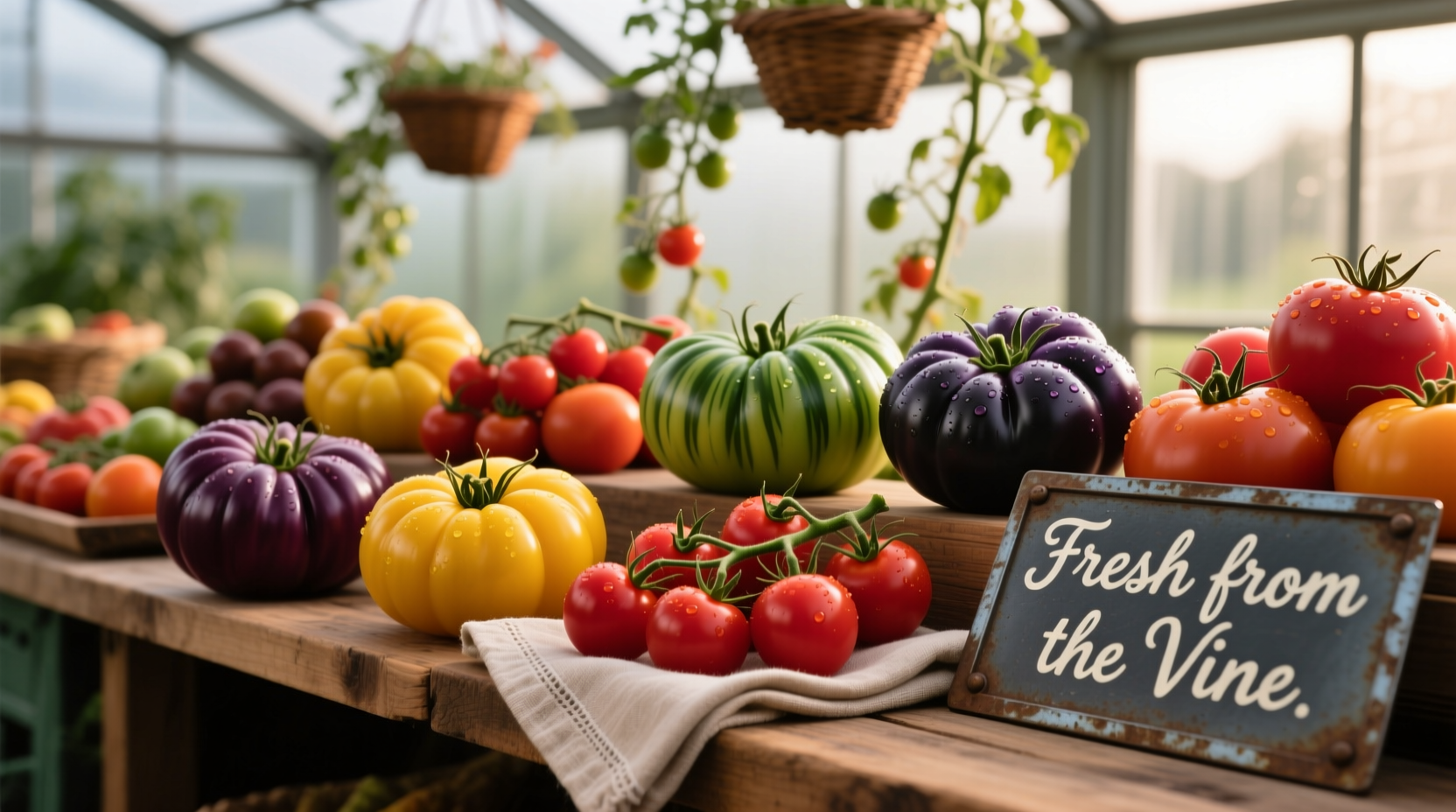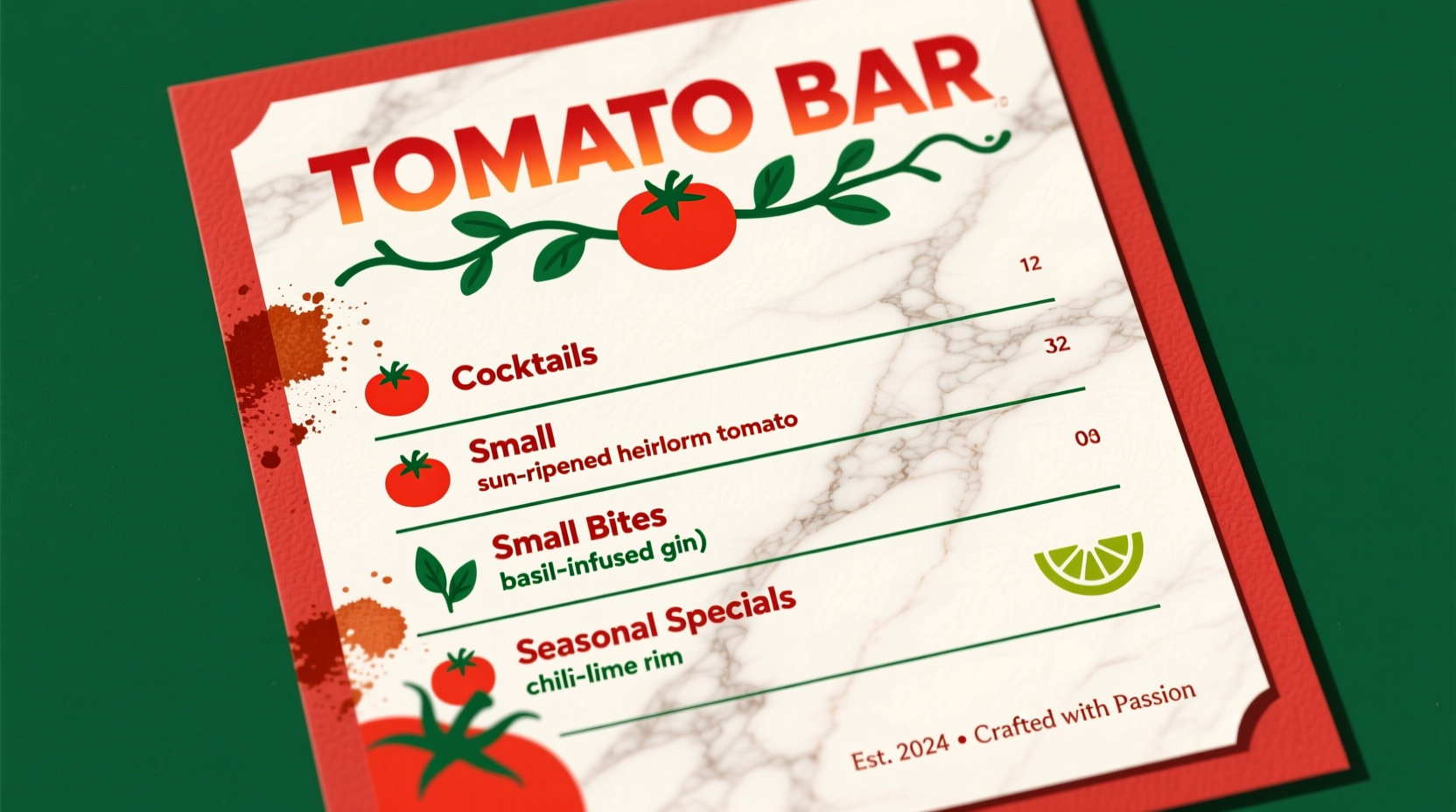When planning your visit to a tomato-focused establishment, knowing exactly what to expect on the menu can transform your dining experience. This comprehensive guide breaks down the essential elements of a quality tomato bar menu, helping you make informed choices whether you're a casual diner or a serious tomato enthusiast.
What Defines a True Tomato Bar Menu
Unlike standard restaurant menus that might include a few tomato dishes, dedicated tomato bars build their entire culinary identity around this versatile fruit. The best establishments source directly from local growers and highlight specific varieties that shine during different seasons. You'll typically find:
- Varietal tomato displays featuring 5-10 different heirloom types with tasting notes
- Preparation methods that showcase tomatoes raw, roasted, grilled, and preserved
- Regional specialties reflecting tomato traditions from Mediterranean, Latin American, and Southern US cuisines
- Pairing suggestions for complementary ingredients like basil, burrata, and artisanal breads
According to agricultural data from the USDA National Agricultural Statistics Service, over 250 tomato varieties are commercially grown in the United States, though most tomato bars focus on 15-20 seasonal selections that represent the best flavor profiles for that time of year.
Seasonal Menu Evolution: What to Expect Throughout the Year
Tomato quality varies dramatically by season, and quality establishments adjust their menus accordingly. Understanding these cycles helps you visit at optimal times:
| Season | Featured Varieties | Signature Dishes | Flavor Profile |
|---|---|---|---|
| Early Summer (June) | Early Girl, Stupice | First Harvest Bruschetta, Tomato Consommé | Bright acidity, firm texture |
| Peak Season (July-August) | Brandywine, Cherokee Purple, Green Zebra | Heirloom Caprese Tower, Tomato Water Sorbet | Maximum sweetness, complex flavors |
| Late Season (September) | Roma, San Marzano | Concentrated Tomato Broth, Preserved Tomato Tapenade | Deep umami, concentrated flavor |
This seasonal approach aligns with agricultural research from Cornell University's Vegetable Program, which documents how tomato sugar content and volatile compounds (responsible for aroma) peak during mid-summer harvests when day-night temperature differentials are greatest.

Dietary Accommodations on Tomato Bar Menus
Modern tomato bars increasingly accommodate various dietary needs without compromising flavor. Look for these common adaptations:
- Gluten-free options: Many tomato bars offer grain-free alternatives for traditional bread-based dishes like pan con tomate
- Vegan preparations: Creative substitutions using cashew cream or avocado replace dairy in dishes like tomato-burrata salads
- Low-sodium versions: Particularly for preserved tomato items where salt content can be high
- Allium-free options: For those avoiding onions and garlic, which commonly accompany tomatoes
When evaluating menu options, consider that tomatoes naturally contain about 9 mg of sodium per 100g according to USDA FoodData Central, making them an excellent base for heart-healthy preparations when additional salt is minimized.
Maximizing Your Tomato Bar Experience
Knowing how to navigate a tomato bar menu can significantly enhance your dining experience. Seasoned tomato enthusiasts recommend these strategies:
- Ask about the day's tomato varieties - Staff should be able to describe each type's flavor profile and origin
- Request tasting samples when multiple heirloom options are available - subtle flavor differences matter
- Inquire about preparation techniques - Slow-roasted versus raw preparations yield dramatically different experiences
- Consider complementary pairings - Quality tomato bars often suggest wine or craft beverage matches
Professional chefs note that the best tomato bars follow what's known as the "three-hour rule" - tomatoes should be harvested, prepared, and served within three hours for peak flavor, according to culinary research published in the Journal of Food Science. This explains why menu offerings change frequently based on daily harvests.
Understanding Tomato Bar Pricing Structure
Tomato bar menus typically follow these pricing patterns that reflect the labor-intensive nature of heirloom tomato preparation:
- Varietal tasting flights: $12-$18 for 3-5 different tomato preparations
- Main dishes: $18-$28, with premium heirloom varieties commanding higher prices
- Preserved tomato items: Often priced higher due to the multi-day preparation process
- Seasonal premium: July-August menus may cost 15-20% more reflecting peak quality and limited availability
These pricing structures align with agricultural economics research from the University of California Agriculture and Natural Resources, which documents how heirloom tomato production costs run 30-40% higher than standard varieties due to lower yields and manual harvesting requirements.
Frequently Asked Questions
When is the best time of year to visit a tomato bar?
Peak tomato season from mid-July through August offers the widest variety of heirloom tomatoes at their flavor peak. During these months, tomato bars typically feature 8-12 different varieties compared to 3-5 during off-season months. The warm days and cool nights of mid-summer create optimal conditions for sugar development in tomatoes.
What makes a tomato bar different from a regular restaurant with tomato dishes?
True tomato bars build their entire culinary concept around tomatoes, featuring multiple heirloom varieties with detailed origin information, seasonal menu rotations based on harvest cycles, and preparation techniques specifically designed to highlight tomato flavors. Unlike regular restaurants that might offer one or two tomato dishes, tomato bars typically have 60-70% of their menu dedicated to tomato-focused preparations.
Are tomato bar menus typically more expensive than standard restaurant menus?
Yes, tomato bar menus often command 15-25% higher prices than comparable dishes at standard restaurants. This reflects the higher costs of heirloom tomato production (which yields 30-40% less per acre than standard varieties), the labor-intensive preparation methods, and the seasonal limitations that restrict operations to 4-5 months of peak quality offerings.
How can I identify a quality tomato bar versus one using generic tomatoes?
Quality tomato bars will specify exact tomato varieties (like Brandywine or Cherokee Purple) rather than just "heirloom tomatoes," provide information about the farm source, and adjust menu offerings weekly based on harvest availability. They'll also have staff trained to describe flavor profiles of each variety. Generic operations typically use 2-3 standard varieties year-round with minimal seasonal changes.











 浙公网安备
33010002000092号
浙公网安备
33010002000092号 浙B2-20120091-4
浙B2-20120091-4